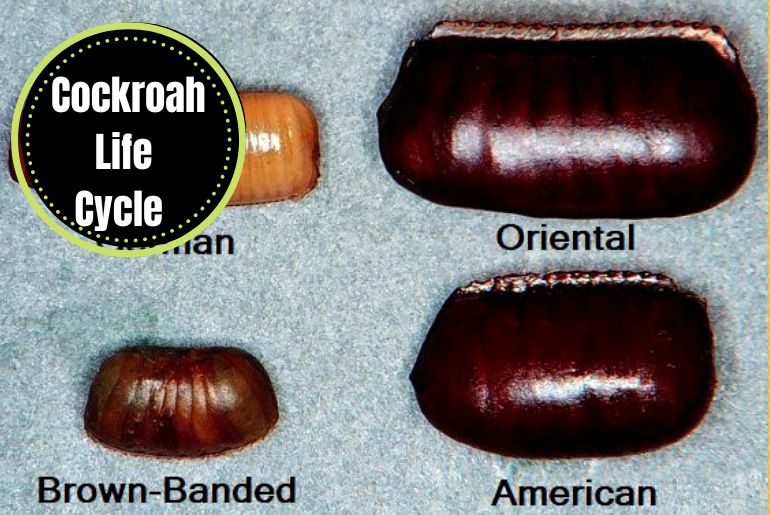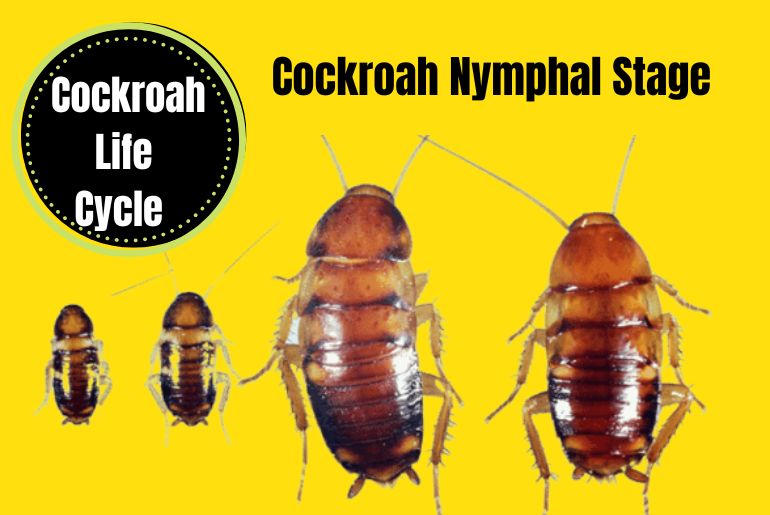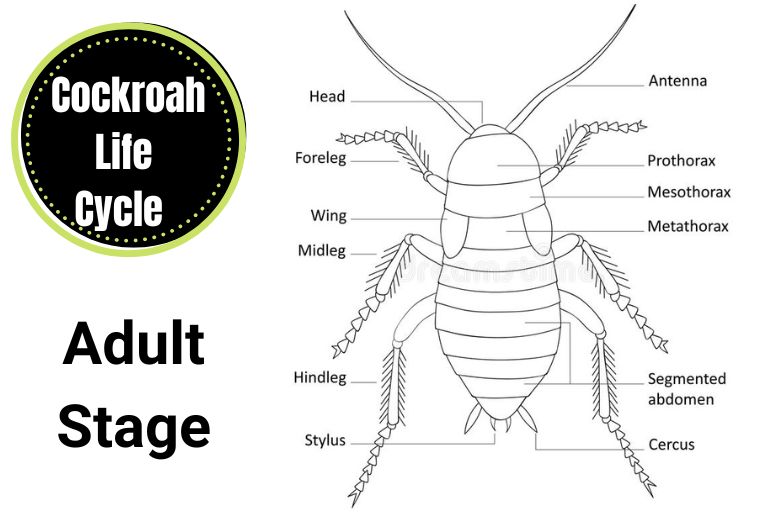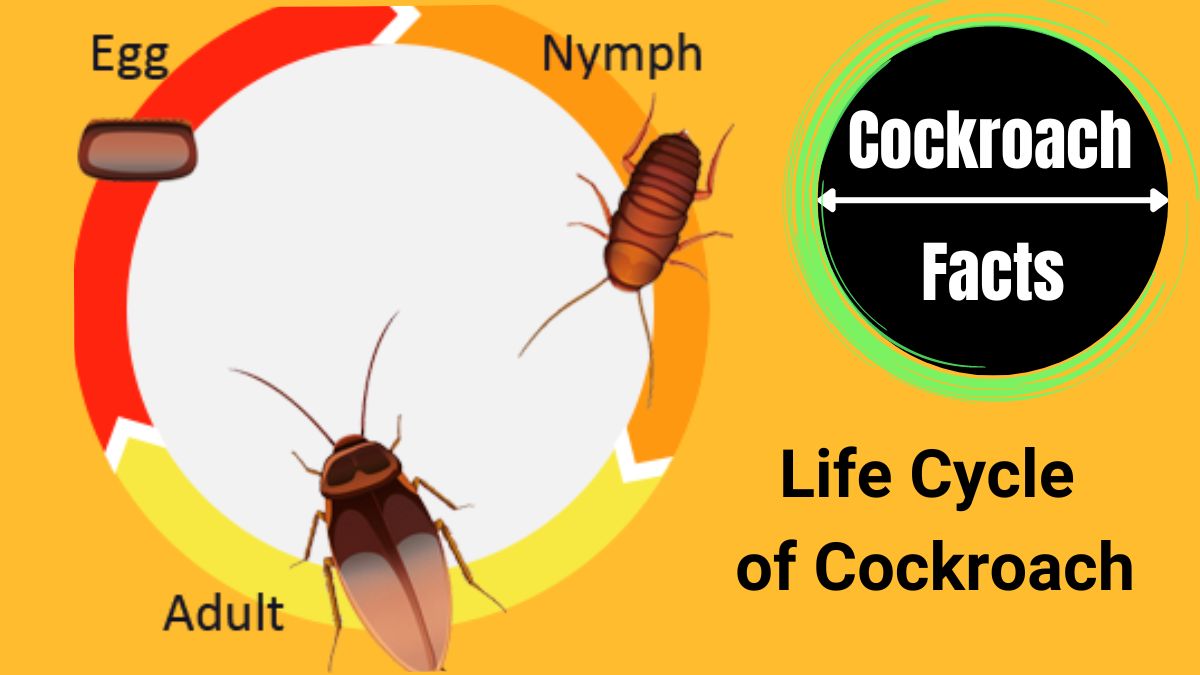The Life Cycle of a Cockroach involves multiple stages, from an egg to an adult. The female adult cockroach lays eggs that hatch into a baby roach named a nymph. The nymph passes through multiple stages of molting before reaching adulthood. The number of molting stages varies in different species of cockroaches. After each molting stage, the nymph grows in size, changes color, and becomes an adult cockroach. The cockroaches can live up to two years.
Breeding Habits
Various types of cockroaches have different breeding habits. Some species lay eggs, while others carry them until they hatch. They lay eggs in various places, such as inside a kitchen or under siding, cabinets, or drains.
Stages of Cockroach Life Cycle
Egg
The female cockroach lays eggs in a hard capsule called an ootheca. The ootheca is typically about half an inch long and contains about 16 eggs. The female cockroach produces one ootheca per month for about ten months. The ootheca may be brown or red. The female cockroach hides the egg capsule by covering it with a layer of rough, dry material. The egg capsule is protected until the eggs hatch. The German cockroach lays eggs that are a little larger than those of the American cockroach. They also lay a larger number of eggs per capsule. These eggs hatch in about four weeks.

Incubation Period
Depending on the species, the incubation period of cockroaches can be anywhere from a few days to a month. During this time, the eggs hatch. The eggs of cockroaches are usually white when they first hatch. However, they turn brown over time.
Nymphal stage
Depending on the species, the nymphal stage of cockroaches lasts from eleven to fourteen months. In most species, nymphs do not make it to adulthood. But the female cockroaches lay several eggs during their lifetime, which will develop into cockroaches.
After hatching from the egg, the cockroaches start to mature by molting. Molting is a process that involves shedding the old exoskeleton to grow. Each molt increases the insect’s size and makes it closer to adulthood. Depending on the species, nymphs can molt up to eight times before reaching adulthood.
The molting process involves the release of hormones that trigger the creation of new skin. These hormones are found in the cockroach’s gut. The hormones are hydrophobic, meaning they do not pass through the bloodstream. The hormones create new skin, which consists of a soft, pale exoskeleton. The new skin holds the body parts together and keeps the moisture in.

The nymphal stage of cockroaches is similar to the life cycle of other insects, including mosquitoes. They are soft white insects that start their life as newborn nymphs. They then grow through various stages of metamorphosis.
When the nymphs reach adulthood, they develop wings. They also have two antennae on their head. Their body has three pairs of long legs. They also have a pale translucent coloring but a reddish hue when mature.
Instars Before Reaching Adulthood
Throughout their lifetime, cockroaches go through different stages. They are capable of molting, which causes them to shed their exoskeletons. Once they are mature, cockroaches become capable of reproduction. They will mate and give birth to a new generation of cockroaches.
The American cockroach goes through 10 to 13 instars before they become an adult. They begin with a whitish/grey color and eventually mature into reddish-brown. They also develop wings during their third and fourth instars. The wings cover 75% of the abdomen.
The German cockroach goes through six or seven instars before it becomes an adult. The nymphs are smaller than the adult cockroaches and have two dark stripes on the back of the head. The nymphs also lose their exoskeletons as they grow. They can live for up to seven months. They also have two stubby antennae.
The Oriental cockroach also has six or seven instars before adulthood. The nymphs have dark brown or black wings about 1 to 1 1/4 inches long. They also have a light brown streak down the center of their back.
Adult
The adult stage of the cockroach is when it is fully grown and has reached its full size. At this stage, the cockroach is able to reproduce and can lay eggs. The adult cockroach has a hard exoskeleton and is dark brown or black in color. It has long, thin antennae and is typically about 1-2 inches in length.

Conclusion
As pests, cockroaches are a nuisance and can be difficult to get rid of them. However, understanding their life cycle is the first step in controlling them. By knowing when they are most active and when they are likely to lay eggs, you can better target your control measures.

